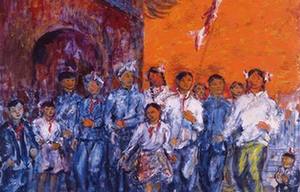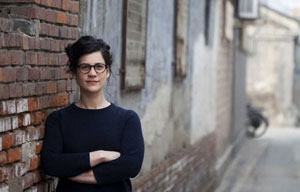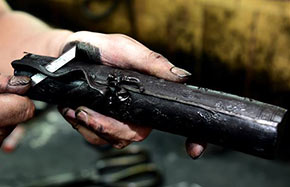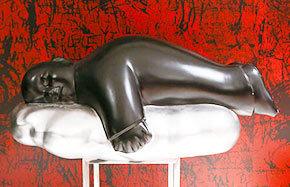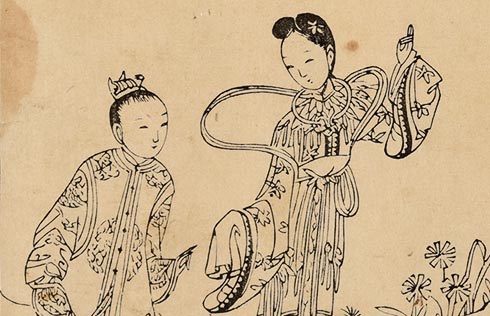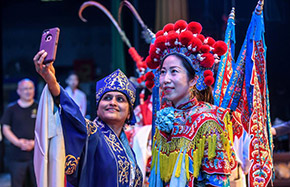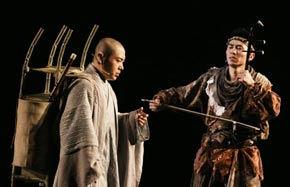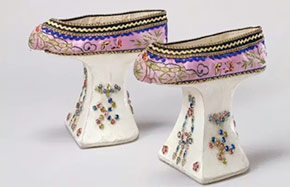Talent and instinct
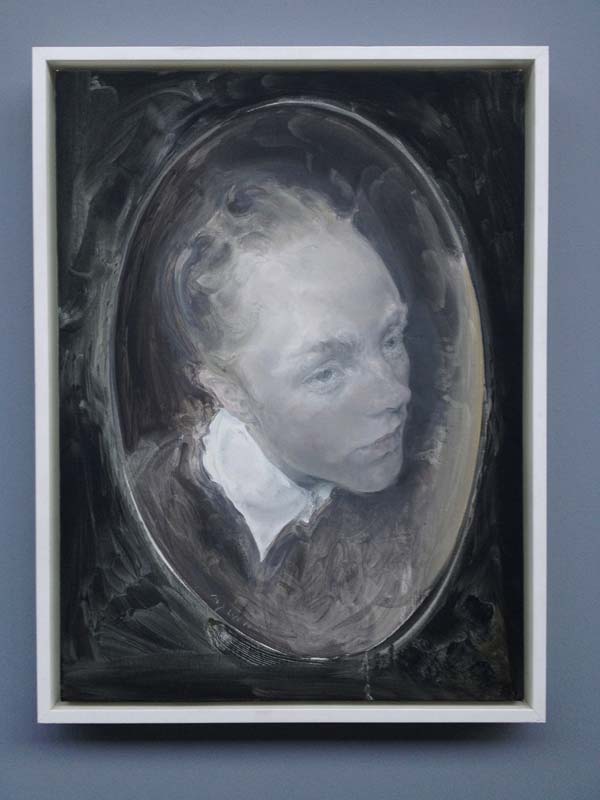 |
| Mao Yan's artwork on display. [Photo by Zhang Zixuan/China Daily] |
"I heard many fellow artists highly praise Mao's superb technique. But what is most precious is his earnestness in work, which is like a mirror that shames those pretenders," comments artist Li Xiaoshan.
Studying painting with his father since the age of 3, Mao quickly showed his precocious ability and was labeled a "genius" even before he entered the Central Academy of Fine Arts in 1988. In 1992 the then 24-year-old achieved national fame at the 1990s Art Biennale held in Guangzhou for his work Portrait of Xiaoshan.
He continued to portray his friends until the late 1990s when he met Thomas, an overseas student from Luxemburg. For the next decade, Thomas was the only subject on Mao's canvas.
"Subjects depicted during Mao's 'pre-Thomas period' had faint social identities, age characters and completed postures; later, these elements were simplified yet the personality became stronger," comments writer Han Dong.
"Thomas is only a cover; it could be anybody including myself," says Mao, who intended to escape from the booming cluster of Chinese symbols at that time by portraying a foreigner.
These finished portraits are therefore a far cry from the original model. "There are surely resemblances in appearance and character, but I endow the figures with extra features through the eyes and facial expression, and through the tone," Mao says.
Mao also likes to infuse instant feelings into every stroke of the brush. For example, if he is obsessed with Song Dynasty (960-1279) poetry during a certain period of time, his inspired sentiment will be reflected in the following works.
Since the mid-1990s, colors of flame and warm brown in his works have gradually been covered and replaced by a much calmer tone of gray, which has lasted till today.
He brushes each canvas with multiple thin layers, which creates a progressive visual that prints fail to capture. But such a method of painting slows down the process and limits him to a few pieces per year. "Every piece deserves years of efforts," believes Mao, stressing that even this must be after "good communication with the model" - otherwise the process "is very likely to continue infinitely".
His pursuit of perfection has been corroborated by the market. In 2007 Mao ascended the million-dollar club when his oil painting Memory or Dancing Black Rose fetched 10.01 million yuan ($1.63 million) at the Beijing Poly Spring Auction.
And in 2011, Mao's Portrait of Xiaoka sold for 12.65 million yuan at the Beijing Poly Autumn Auction, setting his highest record at an auction house.
Aside from the Thomas series that will continue, Mao says, he is preparing a new portrait project studying the images of Chinese people. That, he says, "will be a lifetime project".
"I enjoy spending a long time doing one thing without giving much thought to its meaning or result," he says. "It is my painting principle as well as my attitude toward life."






